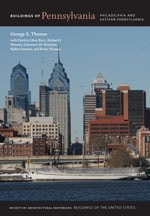
Yellow Springs was named for its sulfur and iron springs that from the early eighteenth century were the locus of a spa where those seeking cures could take the waters. When it was acquired by Dr. Samuel Kennedy in 1774, it was reported that as many as 600 people had frequented the site in a day—an extraordinary number for the eighteenth century. During the Revolutionary War, Kennedy permitted a part of the site to serve as a hospital for injured soldiers. Although it was closed in 1781, portions of the hospital building remain as an archaeological ruin. Yellow Springs grew into a small village complete with an early-nineteenth-century octagonal schoolhouse that offers an economical regional version of the historic one-room school. Rising regional prosperity saw the creation of a larger resort that by the mid-nineteenth century had attracted the construction of several large hotels. High-speed rail transportation to the seashore undercut inland spas such as Yellow Springs. By the 1860s it was functioning as a hospital, this time for Civil War soldiers and, after the war, as a private school. In the early twentieth century, the village was acquired by the Pennsylvania Academy of the Fine Arts (
PH52) for its summer arts program, making the rural training of the Howard Pyle and N. C. Wyeth model available to the academy's students. Barns were adapted as studios, and cottages were used for art faculty.

